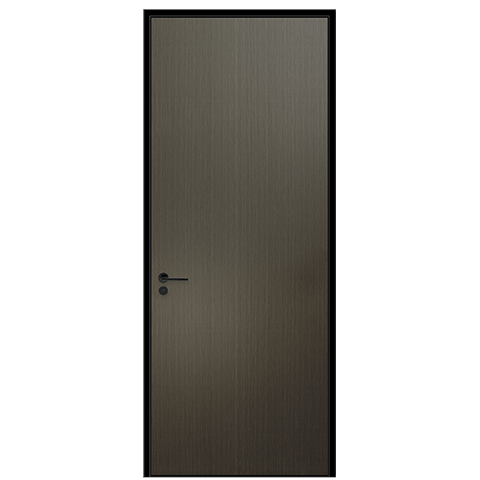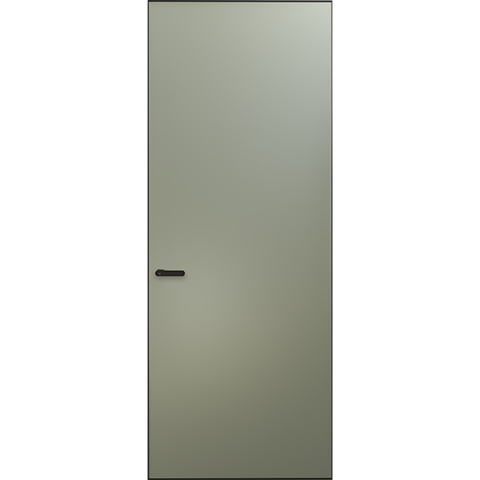Home improvement door and window accessories: know styrofoam
Level 1 A simple understanding of "door and window caulking methods"
During the installation of doors and windows, we often see the master holding a "gun" and making gestures at the connection seam between the window frame and the wall. The movements during operation are like enjoying silky smoothness.
One word, Shu Tan~
The first time I saw the picture of the blowing agent expanding, I felt very novel.
In fact, there is nothing magical about it. The secret of being able to "foam" by itself lies in the composition of the raw materials of the blowing agent.
Fill the polyurethane prepolymer, foaming agent, catalyst, crosslinking agent, etc. into the high-pressure iron tank, and fill it with propane and other gases, that is, the prototype of the foaming agent is roughly completed.
When the material is sprayed from the aerosol can, the foamy polyurethane prepolymer will expand rapidly and undergo a curing reaction with air or accessible moisture to form a solid "foam".
As a common door and window caulking operation in home decoration, it is an excellent little expert to connect and fill the gap between doors, windows and walls. "Gun type" and "pipe type" are the two most common operation methods.
However, Baydee personally thinks that the tube-style operation, even though it is equipped with a disposable rubber tube, is not as easy to use as the "gun-style" one because it is difficult to use.
Of course, the filling capacity of the foaming agent is not limited to doors, windows and walls, including the seal around the pipe or the damaged part of the wall, it can be used to fill; it can serve as insulation protection for wiring joints, ceiling decorative panels, Bonding of door panels, sealing and heat preservation of cold storage and refrigerated trucks.
The reason why the blowing agent is so widely used is because of its biggest feature - easy to use, which can bring more convenience to people's life.
The foaming agent has fine cells and the cells are not connected to each other, so it has good bonding, sealing, waterproof, heat insulation, sound insulation and other functional advantages at the same time, and occupies a certain position in the application of accessories for home decoration doors and windows. .
"Content" of Level 2 blowing agent
Baydee mentioned in the previous article that unscrupulous merchants have black hands on sealants, and the same is true for foaming agents.
Manufacturers purchase hundreds of tons of unknown powder to replace tens of thousands of tons of raw materials in the original polyurethane foam products. The cost is reduced, and then low prices are used to attract consumers.
As a result of doing so, it will make it difficult for the foam to cure, and the amount of foaming will decrease accordingly. There will be many cavities in the foam, and the powder will easily form lumps, which will block the "tip" and seriously affect the quality of the foaming agent product. performance.
In addition to adding powder, unscrupulous merchants will also add gravel to increase the weight of the product (the sale of styrofoam is mainly based on the weight), or add oil, the foam treated in this way If the foam is used, the foam will ooze grease at the bottom, which seriously affects its quality.
However, when it comes to inferior blowing agents, many friends are more concerned about whether the blowing agents are toxic regardless of their quality.
After all, there is an old saying in and out of the industry that "no aldehyde, no glue". It is really curious about what substances are volatilized by the blowing agent.
There has been a self-media evaluation and research on this, and the result is that the propane and butane contained in the blowing agent caused the TVOC (total volatile organic compounds) to explode, and it contains a variety of silicon compounds. Although some are easy to volatilize, there are also many high-risk ones.
Summarize the conclusion in one sentence: Although it has no effect on the human body, it is easy to cause discomfort if inhaled at high concentrations for a long time.
Baydee has also seen it on multiple platforms. Many people will use foaming agents to treat their homes and do DIY decorations.
It is indeed very individual, but it is also accompanied by a certain degree of danger.
Although the "toxicity" of the blowing agent will be volatile, if it is placed indoors, and it is a place where we have long-term activities, it will eventually have some impact on ourselves.
Because of this, we must make good use of blowing agents.
use of level 3 blowing agent
Through the "reading comprehension" of the first two parts, I believe that all friends have a more detailed concept of blowing agents. Enter the advanced class now and teach a little skill of foaming agent.
1. Cleaning before use
Before the installer uses the foaming agent, he should use a brush and other tools to clean the surface of the hole, and ensure that the surface of the frame is clean, there should be no large particles of residue, and try not to appear other gravel dirt.
Failure to clean will result in insufficient filling of the blowing agent.
2. Sprinkle water before construction
Before the foaming agent is applied, you can pay attention to whether the master has sprinkled an appropriate amount of water on the place where the foaming agent is to be applied.
The reason for this is that the greater the humidity, the faster the foam will expand.
3. Keep a ventilated environment
Some merchants claim that "the foaming agent is no longer harmful to the human body after curing", but Baydee believes that this statement is not very rigorous. The curing of the blowing agent takes several hours, but in the case of inferior products, it takes more time to dissipate.
In installing caulk for windows and doors, Baydee recommends that as long as possible (preferably on a weekly basis) the ventilation should be fine.
4. "Expansion with heat and contraction with cold" of foaming agent
Some friends have encountered the problem that the foam will shrink after the foaming agent of their own is cured. When this happens, it is likely that the output volume (volume) is too large, the cell expansion is large, the cell wall is too thin, the density is reduced, and it cannot withstand the changes of thermal expansion and contraction.
Or if you use low-priced and low-quality styrofoam products, shrinkage may occur. The shrinkage of the foaming agent will lead to problems such as looseness and deformation of the doors and windows, and it will also lead to poor sound insulation and water leakage from the doors and windows, so it is necessary to choose a high-quality foaming agent.
5. Gluing operation in winter
In the case of low temperature in winter, the blowing agent may appear pulverized and become brittle.
First of all, we need to know that this is a common feature of polyurethane products, not a product quality problem. As the storage time goes by (mainly related to the temperature of the construction site), the seal of this chalking phenomenon will gradually disappear until it is restored. normal status.
Usually, the pulverization of the foaming agent can return to its original state within 48 to 72 hours, and it takes a week or more in some severe cold regions.
Secondly, we plan to use the foaming agent in winter, so we can prepare the foaming agent at a place above 10 ℃ before construction; shake it several times when using it; do not press and cut the surface of the foaming agent after construction , so as not to cause damage to the cell structure, causing it to fail to return to its original state.
Finally, construction is not recommended when the temperature is below zero. Even if the foaming agent is filled on the inside, the construction on the outside will be affected, which may lead to secondary construction.
Let's return to the topic of toxicity mentioned above.
When the foaming agent is completely cured, it will form a non-irritating and non-toxic adhesive layer, which can play a variety of properties. If you buy a low-quality foaming agent, it may be toxic due to poor-quality raw materials.
So how to choose and buy high-quality foaming agent has become the ultimate topic for our consumers.
Selection of Level 4 blowing agent
Finally, it is time to buy this section, and every time it is regarded as the final boss of door and window shopping to break through.
1. "You get what you pay for"
Saying it over and over again, Baydee always believes that choosing quality-guaranteed products produced by large manufacturers is the basis for purchasing. The foaming agent market can be regarded as a mixed bag.
When we buy other foaming agents, we need to confirm whether its manufacturer's trademark is registered, so as to have a guarantee for product quality.
As for whether the expansion coefficient is marked on the bottle, most of them are between 70-80. The larger the value, the faster the expansion speed, which is another small detail to recognize the quality.
2. Classification of blowing agent
We often see some letters on the bottle of foaming agent, which will confuse consumers. What do they mean?
If the grades A, B1, B2, B3 are indicated on the bottle, it represents the fire rating of the blowing agent.
Take B as an example, B3 is the most basic and has almost no flame-proof ability. After curing, it only needs to be close to the fire source; B2 has made some progress. The highest grade, after the blowing agent is cured, even if it is ignited, it can be extinguished immediately after leaving the fire.
Therefore, when choosing a blowing agent, we recommend B2 and above products.
3. Appearance identification
The colloid produced by a high-quality foaming agent is "white in color", while the yellowish or black-gray foaming agent mostly uses cheap or low-quality raw materials.
The surface of the foam produced by a good foaming agent is ravine-shaped, while the surface of a poor foam is flat and wrinkled; another point is that a good quality foaming agent has a larger foaming volume.
4. Foam contrast
When a good-quality foaming agent is foaming, the foam it sprays is smooth, neither too thin nor too thick (too thin foam is more popular, the amount of foaming is not large, and the bubbles will appear Collapse will affect the construction; and too thick foam is easy to dry, shrink, and the effect of caulking is not good).
After the foam is air-dried and solidified, we can try to cut the foam to see the internal structure of the cells. If the cells are uniform and fine, it is a good foam; if the cells are large and the density is not good, it is a defective product. (Only when the cell density is high, the waterproof, sound insulation and elastic hardness of styrofoam can be guaranteed to a certain extent)
level 4 final words
Now that the weather is getting colder and colder, many friends may think "I can" when facing the gaps in their doors and windows, and are eager to try it themselves.
However, Baydee believes that there are still many difficulties in the operation of the blowing agent. It is best to leave the professional work to professional people to avoid unnecessary troubles.
 Hot Recommendation
Hot Recommendation
 Latest Products
Latest Products



